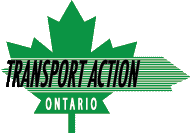
GO Train Service Improvements start April 28
By Transport Action Ontario | Urban Transit
Ontario continues to unlock the power of the GO train network.
On Sunday April 28, 2024, GO Transit’s new summer schedule began with a large service increase. The service increases were announced by the Premier and his transportation minister at the beginning of April, after being ‘leaked’ a few months ago in a Metrolinx update email. Metrolinx claims that this is the largest single service expansion in GO Transit’s history, but that fact has yet to be independently verified.
Lakeshore Line
The increase includes the return of 15-minute service on the Lakeshore Line between Oshawa and Oakville during weekend afternoons and evenings. Expansion of 15 minute service beyond Oakville is desperately needed, but will have to be held off until the Burloak Drive grade separation is completed. Metrolinx has yet to state that this will be the case, so public pressure will likely be needed.
Kitchener Line
The first 30-minute midday weekday service on the Kitchener line has also begun. The service operates only between Bramalea and Union. Unfortunately, at many times the schedule is not quite 30 minutes, and gaps still exist in off-peak directions. Riders beyond Bramalea continue to be left in the dark as to when they will see even weekend service to Kitchener, even following many months of increased pressure from area MPs, MPPs, and mayors to release even so much as a timeline for improved service.
Stouffville Line
The Stouffville line is seeing a return to train service beyond 7pm on weekdays, a hopefully permanent change that will contribute to the transformation of GO Transit from a commuter rail system to a regional rail system.
Milton Line
Unfortunately, even after deadheading a GO train all the way to Milton for the announcement, Milton riders were only gifted one additional weekday round-trip. Premier Ford stated in response to a question that the announcement location was “absolutely not” motivated by the by-election currently underway in Milton.
UP Express (UPX) stumble
The schedule changes didn’t come without some havoc. In a bid to address crowding, and to reinforce the UP Express as a premium service only for airport-downtown passengers, the changes originally proposed the removal of stops at Weston and Bloor stations for every second UPX train. The proposal sparked enormous immediate public uproar from UPX riders who have been grateful for the accidental rapid transit success the train has become by being a fast link to downtown.
In a rare move, transportation minister Prabmeet Sarkaria himself ordered the reversal of the change. Such a change should have been seen as obviously unpopular from the beginning, and is just another example of how Metrolinx can be out of touch with its passengers. The quick reversal is a positive move showing the increased focus the government is paying to transit and transit riders, however some have speculated that the change might have been spurred by the Premier’s nephew and area MPP Michael Ford, whose constituency office happens to be right across from Weston GO. Perhaps MPP Ford’s office should be be moved to Kitchener!
More to come
Overall, these are welcome, if not a little rough, changes that are just the beginning of what is to come. As we wait for the completion of the co-development phase of the GO Expansion project with ONExpress, we wish that Metrolinx were more forthcoming with their changes and future plans so that riders are treated with respect and the public can continue to reliably plan their lives around the GTHA’s future sustainable and frequent regional rail.








You must be logged in to post a comment.